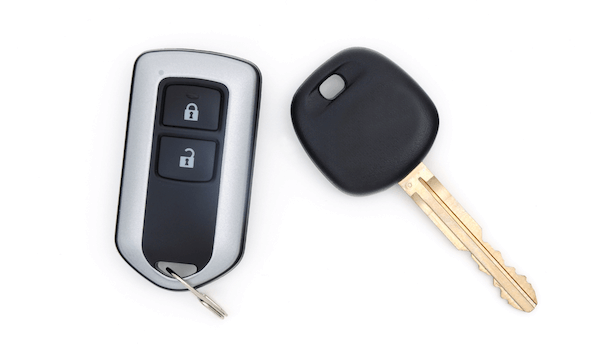Throughout history, the concept of access has remained sacred to society. In fact, records show that Ancient Egyptians utilized pin tumbler locks made of wood over six thousand years ago. Society has come a long way since the first-ever locks, with the structural integrity of the locks evolving to become more secure as technology advances. The concept of lock and key has kept our personal belongings and homes secure, but also our vehicles. As we moved into the smart era of hyper-connectivity, automotive manufacturers began to develop the idea of a virtual “digital key.”
The first-ever car key was created in 1910, though it had not yet developed to a point where it could turn the ignition, the keys could keep out unwanted auto theft by locking and unlocking the passenger and driver doors. 1949 saw the first-ever ignition keys that not only locked doors but also operated the car’s starter mechanism. Chrysler created the technology and other manufacturers followed suit, putting their own spin on the design – it became a popular concept to mark vehicle keys with the manufacturer logo, a sign of prestige.
However, as keys themselves became signifiers of the ownership of a valuable commodity, the number of vehicle thefts increased exponentially. In 1991, vehicle theft in the United States reached a record high of over 1.6 million, at a rate of 659.01 per 100,000 population. As the numbers rose, car manufacturers searched for ways to ward off thefts, and in the 1990s, central locking systems began to be prevalent in new models of automobiles. These systems allowed for one lock to be able to simultaneously lock all doors of the car – owners no longer needed to go around to each door to lock their vehicle. share through those mutual goals.

Progress did not stop there, as keys continued to evolve into more secure, more convenient access tools. The transponder chip for automobiles was introduced in 1995, resulting in even greater security for the vehicle. The transponder contains a code that sends a command to the ignition control unit; the car does not start unless the transponder matches the immobilizer (an electronic security device fitted into the vehicle). They are often combined with remote keys, allowing for a button to be clicked to lock and unlock using a radio transmitter to send a signal to the receiver in the vehicle.
This brings us to current trends, where most vehicle keys are remote systems that can open the door and start the engine without the key making physical contact with the car itself. However, they do need to be in close proximity, as it communicates with the vehicle using a low frequency (LF) or ultra-high frequency (UHF) radio signal. The car will not operate properly if it does not sense the key in its confines.

As we moved into the smart era of hyper-connectivity, automotive manufacturers and experts in the industry began to develop the idea of a virtual “digital key.” Near Field Communication (NFC) technology would allow for access, locking and unlocking the car, while server communication would allow for more tasks to be controlled through the device like ignition control, climate control, and even in-vehicle infotainment control. All this could be accessed through a digital key management application on the mobile device – conveniently, one less item to carry for vehicle owners.

However, as keys become more connected and less physical, there is yet another element to consider: cybersecurity. It is crucial that we consider that the more connectivity we usher in, the more enticing it can be for attackers to look for a way to infiltrate. This is why it is also essential to incorporate security technology like Public Key Infrastructure (PKI) into the system to guarantee security even at its convenience.
While we will ultimately get to a point in vehicle evolution where a physical key does not necessarily need to be carried around, the reality is that though the idea of the traditional key will change, ultimately the concept will remain. A key’s purpose is to help its owner access different entry points, but to also keep them safe by locking out unwanted intruders. Therefore, no matter the form of the key, digital or physical, security will remain essential.
For more information about AUTOCRYPT and its digital key, learn more here.



